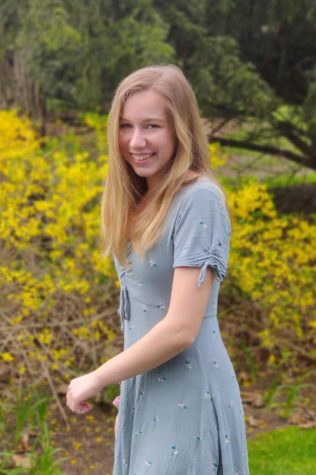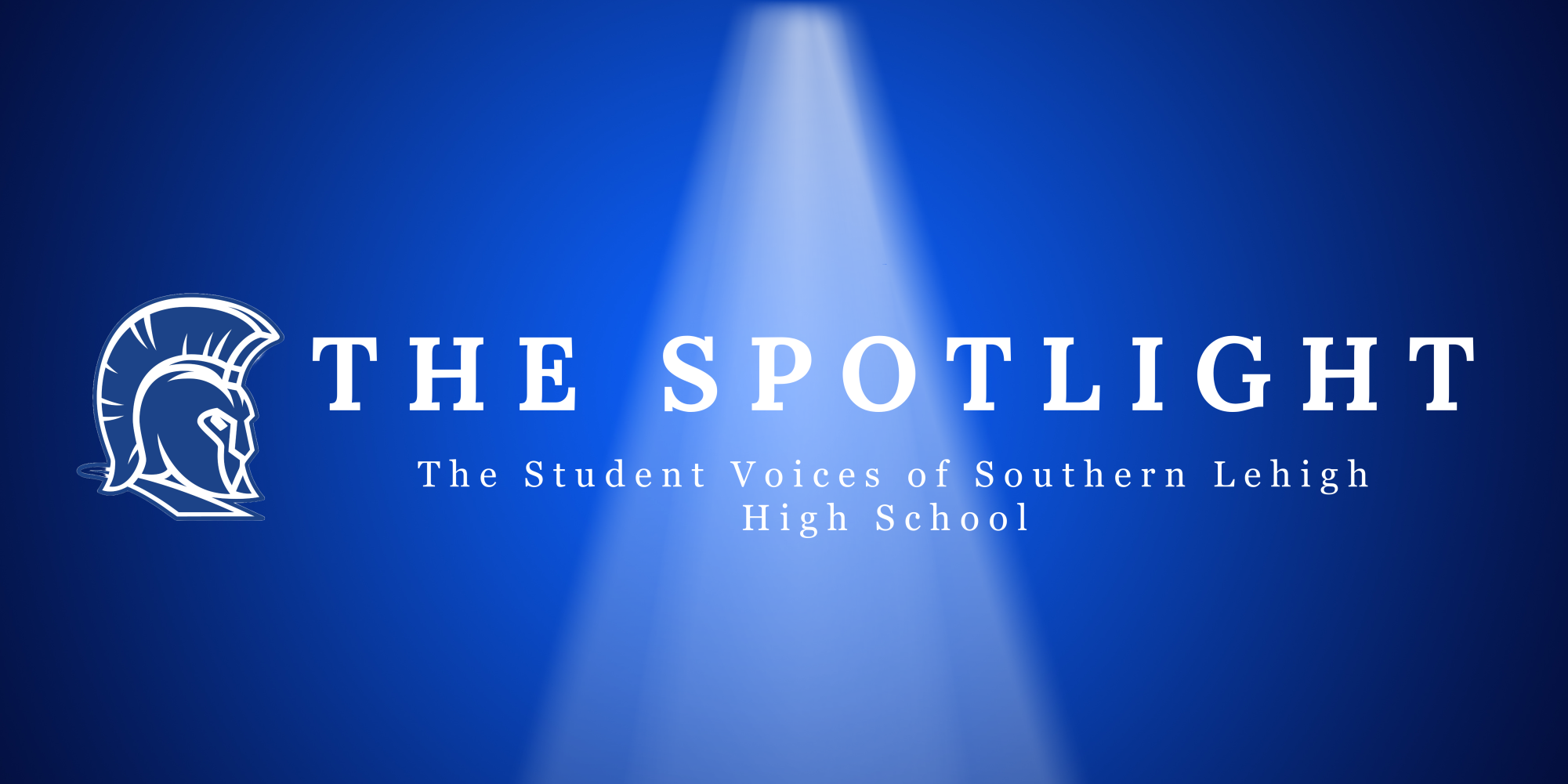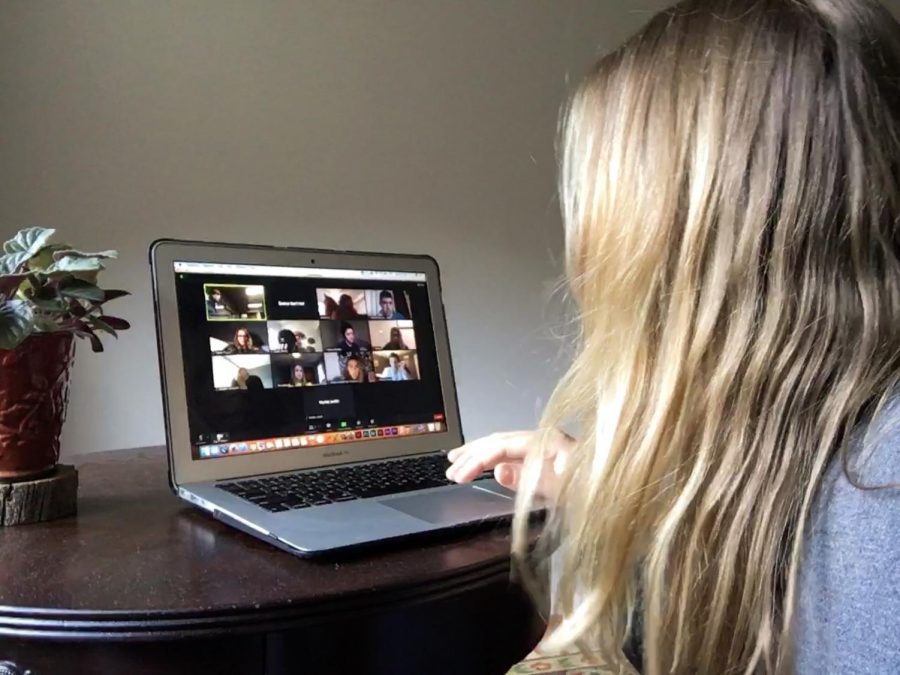Southern Lehigh High School Opens Up Optional Hybrid Model to Students Online
Senior Saskia Van’t Hof attends an AP government class with students streaming in through from their homes and those at school.
This school year, Southern Lehigh High School and Middle School began the semester on a completely remote virtual model, one of the only schools in Lehigh County to do so. A month and a half later, the two schools have transitioned into a hybrid model of virtual and in-person classes.
“I think a lot of people are working harder than they’ve ever worked, both staff and students, but I also think it’s been an adjustment for everybody,” Southern Lehigh High School principal Mrs. Beth Guarriello said. “There are certainly bumps in the road and since we’ve never done this before, there are things that we were encountering that we didn’t expect.”
During the first phase of virtual learning (which lasted from the beginning of September to early October), students in the high school began their school day at 9:45 in the morning with an advisory period. Then, they attended classes that averaged around 45 minutes. In most classes, students were expected to keep their cameras on and be active participants in discussions.
“The fully virtual model was tough to acclimate to at first, but I think that I’m adapting and my friends are as well,” senior class president Cameron Hines said. “It’s been a lot of work outside of class, but I do think that the concept of giving students a ‘brain break’ from working on Zoom 32 hours is a good one. I hope the district continues it.”
Although many students have enjoyed the freedom that comes with learning from home, students have also noted that such freedoms can be highly disruptive to their learning environment. From internet malfunctions to a lack of closeness between student and teacher, online learning isn’t without its quirks.
“I don’t see it as an issue that’s significantly worse because we’re virtual, but there does seem to be a large number of my classmates not engaging in the learning process online,” Hines said. “It’s much easier to stay muted when you’re in your own room, but at the same time it’s easier to recognize when someone doesn’t seem as involved—especially when your face is enlarged on a screen.”
In conjunction with their students, teachers and staff at Southern Lehigh have also been adjusting to the new schedule and curriculum as it changes day by day.
“For my colleagues and I, we needed to evolve and to do it quickly,” physics teacher Mr. David Doughtery said. “As professionals, there is no option to fail. We must out-think the obstacle. We have to keep trying until we get it right.”
Since going online, teachers have had to approach education in a radically different way. For many subjects, lesson planning from years prior had to be completely scrapped as methods of grading, attendance, and class activities changed.
While the online curriculum has led to many positives — such as bringing attention to new educational technology — and provided opportunities to go beyond the typical classroom, there have also been some obstacles on the teachers’ side as well.
“Probably the biggest challenge to all of us educators is the fact that we don’t get to be with students,” Mrs. Guarriello said of virtual learning. “We chose this profession because we like working with kids. To be doing this job without being able to interact in person with the kids, it’s all of the hard part of the job without the good stuff.”
On September 25th, the district announced plans to transition the middle and high schools into a hybrid program. Over the month of October, the schools moved students to a hybrid schedule where the students attend classes in-person two days a week and virtually two days a week, with Fridays continuing to be asynchronous.
Starting October 5th students began attending school online at 7:30 am to mimic the new bell schedule, and in the following week, 7th and 9th graders began entering the schools on alternating days. Students in all grades were allowed into the building the week of October 19th, completing the transition into the hybrid model.
“The first week where I had to get up early was definitely hard,” freshman Sarah Tesche said. “I almost regretted the new schedule because classes felt so much longer. But now that I’m in school…, I feel so much more productive and it feels more normal. ”
Currently, students have the choice between the hybrid or fully remote model, so teachers have to adapt their lessons to students in both situations. Administrators are also looking for ways to find a balance between the two, and the district continues to find ways to improve the online experience.
“I don’t think anyone’s really ready for something that’s never been done before,” Mrs. Guarriello said. “There is always a level of nervousness when you try something new, but I am 100 percent confident that our teachers will rise to the challenge and provide a high-quality education for our students even in the hybrid environment. It’ll seem like they’ve been doing this forever.”

Saskia Van’t Hof is a fourth-year staff reporter and second-year Editor-in-Chief and Opinion Editor for the Spotlight. She is also president of Key Club,...


